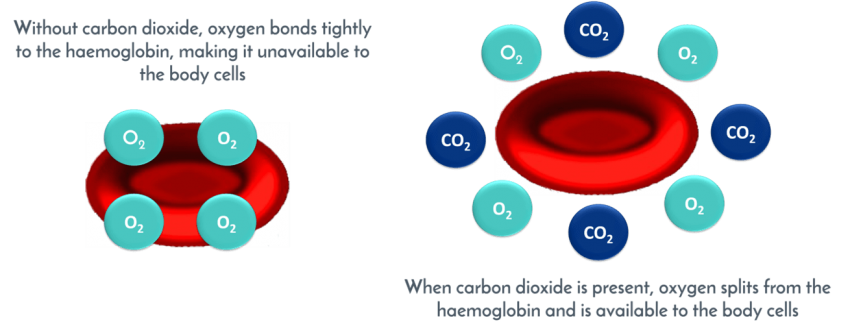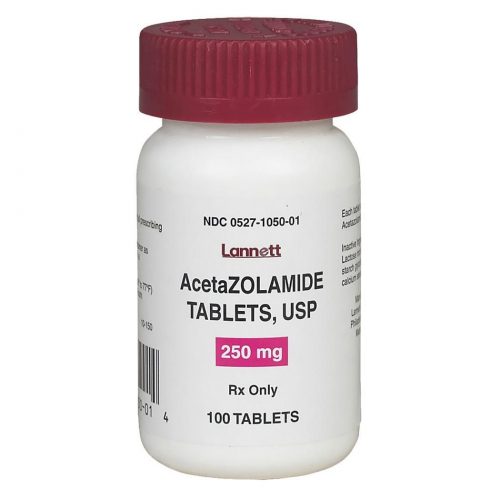The Remarkable Health Benefits of Altitude | Elevation

Did you know that living at high altitude on a mountain can reduce your risk of cancer, heart disease, diabetes and ALL diseases?
In this episode, we discuss the remarkable health benefits of living or vacationing in the mountains, high up above sea level at elevation. You’ll also learn the mechanism underlying the physiological benefits from altitude on the human body and how you can use this information to improve your health today.
(Click here to watch on YouTube)
TABLE OF CONTENTS
Introduction
The health benefits of altitude or elevation I discovered from Dr Raymond Peat in an interview that he did with The Herb Doctors on KMUD radio in Arcata California. I found the information he shared fascinating, and after reading, listening to or watching this presentation I think you will too. I found it relevant to the subject of cancer, which I was writing a book about at the time, so I ended up reading some of the research and wrote a little bit about elevation and altitude in my book called Cancer: The Metabolic Disease Unravelled.
Let’s look at some of the research showing reduced risk of heart disease, stroke, cancer and other diseases.
Altitude Reduces Your Risk of Heart Disease and Stroke
After reviewing the scientific evidence on the relationship between altitude or elevation and stroke, it’s clear that living at altitude can indeed reduce your risk for these diseases and others. Here are a list of studies confirming this below.
- Altitude reduces Ischemic Heart Disease Mortality[1]
- Altitude reduces Heart Disease Mortality[2]
- Altitude reduces arteriosclerotic heart disease mortality[3]
- “The available data indicate that residency at higher altitudes are associated with lower mortality from cardiovascular diseases, stroke and certain types of cancer.”[4]
- “The protective effect of living at higher altitude on coronary heart disease and stroke mortality was consistent and became stronger after adjustment for potential confounders.”[5]
Altitude Reduces your Risk of Cancer, Diabetes and All-Cause Death
Living at elevation can also reduce your risk of developing cancer, diabetes and death from any cause. Here are 5 studies showing these remarkable health benefits.
- “Models demonstrated that elevation is strongly, negatively associated with lung cancer incidence.” For every 1,000 m rise in elevation, lung cancer incidence decreased by 12.7%.[6]
- Youk AO, Buchanich JM, Fryzek J, Cunningham M, Marsh GM. An ecological study of cancer mortality rates in high altitude counties of the United States. High Alt Med Biol. 2012;13(2):98-104. Link: https://www.ncbi.nlm.nih.gov/pubmed/22724612
- Amsel J, Waterbor JW, Oler J, Rosenwaike I, Marshall K. Relationship of site-specific cancer mortality rates to altitude. Carcinogenesis. 1982;3(5):461-5. Link:https://www.ncbi.nlm.nih.gov/pubmed/7094209
- Weinberg CR, Brown KG, Hoel DG. Altitude, radiation, and mortality from cancer and heart disease. Radiat Res. 1987;112(2):381-90. Link: https://www.ncbi.nlm.nih.gov/pubmed/3685264
- Hart J. Cancer mortality in six lowest versus six highest elevation jurisdictions in the u.s. Dose Response. 2010;9(1):50-8. Link: https://www.ncbi.nlm.nih.gov/pmc/articles/PMC3057635/
Altitude as a Therapy: If You Already Have Cancer
What if somebody already has cancer? Altitude for cancer treatment in humans has to my knowledge never been studied. However, there’s an interesting and revealing study in rats that Dr. Peat has mentioned. It was a Russian study, and essentially they induced cancer in the rats and simply by moving them up to elevation for a period of time, 50% of the rats healed without any other medical intervention.
So the elevation itself, without any other treatment, cured those rats of their induced cancer.
Negative Features of Altitude
Now it’s important to note that there are negative features of altitude that was alluded to in at least one of the previous studies. What they mentioned was that the radiation, the low-level ionizing radiation, which is the ultraviolet B portion of the radiation spectrum from the sun, is more intense at high altitude. This radiation can also be called cosmic radiation. In theory, you would think that as you ascend to a higher altitude that you would have increased negative effects from this bolstered intensity of low level ionizing radiation. People like Linus Pauling who had been very critical of routine X-rays and the low level ionizing radiation emissions from them – he thought that studies showing benefits of increased altitude were in error.
Today, we know the explanation for this. The idea is that at higher intensity, the radiation tends to pass right through your cells and body without causing much damage. Whereas, when you’re at sea level the radiation is going slower, it stops in your cells and is able to cause a lot more damage. This concept is called linear energy transfer.
Altitude Increases Lifespan

Living at altitude increases lifespan in humans and animals. Dr. Ray Peat mentioned that in the 1950s, a 187-year-old Peruvian man came down from the mountains in Peru to tour the US as an oddity. After a couple of weeks of visiting he went back to Peru and it turns out he died shortly afterwards.
In the absence of the beneficial environmental or atmospheric factors that existed at his home in the mountains, he quickly succumbed to death. It was those factors that had been keeping him alive for so many years before his death.
Many people recite the Hunza people, which is an indigenous tribe that lived in Northern Pakistan, who were credited for living long and healthy lives. Their diets contained mostly nuts, fruit, seeds and yogurt. But the thing that people don’t talk about – and this is why I bring up the Hunza – is that they lived at an altitude of 2500 meters. Most people don’t realize, when talking about the Hunza – this hidden yet significant contributing factor in their health and longevity.
How does it work?
The question is: How does it work? How are the benefits of elevation imparted to the human body? What is the underlying physiological mechanism at work? The answer is critical and will change the way you think of health and other things as well.
The decrease in oxygen pressure that occurs at elevation means there is less oxygen pressure pushing carbon dioxide out of cells, allowing the body to retain more carbon dioxide – a phenomenon known as the Haldane effect.
The Bohr Effect

Why is increasing carbon dioxide in the body beneficial? In order to understand this phenomenon, the key concept to understand is called the Bohr effect.
During transport through the body, oxygen is bound to red blood cells (hemoglobin). However, without adequate carbon dioxide, the oxygen will not be liberated from the red blood cells and thus your tissues will not be able to use it. It’s CO2 that triggers the release of oxygen from your red blood cells and makes it available to your tissues.
The key message here with the Bohr effect is that without carbon dioxide in your body, your body can’t use oxygen. So, at elevation, the increased carbon dioxide in the body means more efficient use of oxygen in the body.
Professional Athletes Train at Elevation

Many professional athletes have been gaining the benefits of training at elevation. The increased carbon dioxide that results in the body at elevation prevents the formation of lactate or lactic acid in the body. Increasing the efficiency of the use of oxygen and its lactate inhibition increases muscular strength, muscular endurance and reduces recovery time. I found a quote from activerain.com about this:
“It is not uncommon to be driving to work and see Sugar Shane Mosley jogging in the snow beside the boulevard. Boxers first started training up here full time in the late 90’s, Oscar De La Hoya in particular. At one time, Oscar, Fernando Vargas, and Sugar Shane all owned homes in Big Bear Lake. Oscar recently sold his estate to former Light Heavyweight Champion Of The World Tito Ortiz.
Even more than the boxers, MMA fighters have been training here in droves. In the past year alone, I have seen or met Quinton “Rampage” Jackson, Tito Ortiz, Joe “Daddy” Stevenson, Cub Swanson, Michael Bisping, Matt Hammil, Cheick Kongo, Justin Levens, Tyson Griffin, Gray Maynard, and Josh Burkman. Joe Stevenson, Cub Swanson, and Justin Levens have even been gracious enough to do free seminars at the Karate school I attend.”
Olympic Gold Medal Swimmer Michael Phelps Sleeps in his Altitude Chamber

American gold medal Olympic swimmer Michael Phelps is known for sleeping in an elevation tents which surrounds his bed. His bed exists inside an air-tight plexiglass chamber with a regulator and a device that maintains reduced oxygen pressure within that chamber in the air. So he goes in at night, sleeps for who knows, 8 to 12 hours perhaps, in conditions that mimic the same atmospheric conditions at altitude. And as you can see in his swimming he is a gold medal Olympic champion and that probably had a lot to do with his superior performance.
My experience with carbogen while rollerblading
I wanted to share my experience with testing my athletic performance after increasing my CO2. I had access to what is called a carbogen generator. So essentially you hook a CO2 tank up to a mixer that mixes supplemental CO2 into air and it is then breathed in through a medical mask. By elevating the amount of CO2 in the air I was breathing you get the same effect as being at elevation of increased carbon dioxide in the body.
As many of you know I am also an avid rollerblader. After supplementing with carbogen for about 10 minutes at 5% CO2, I went for a rollerblade in Toronto along the water on Lakeshore road. I rollerblade quite often so I know my limitations and what I’m capable of, so it was very interesting to compare the results of what happened after consuming carbogen.
I ended up sprinting on my rollerblades for about 10 minutes, not having to slow down at all at any point. It felt like I kept accelerating the entire way. And the most amazing thing was by the end of it I didn’t even need to breathe heavy at all, or through my mouth. Normally when I rollerblade, by the end if I did this I would be breathing heavily through my mouth, but this time there was no need at all to mouth breathe or breathe heavy at all. I was virtually inexhaustible.
Treating Mountain Sickness
If you have mountain sickness and you go to your doctor, he or she will prescribe you adrug called Acetazolamide. The discovery and development of this incredible drug was a crowning achievement.

Acetazolamide works by inhibiting an enzyme called carbonic anhydrase. This enzyme normally triggers the breakdown of carbon dioxide in the body, so by inhibiting it, your body is able to retain more CO2.

So what mountain sickness is is essentially your body failing to adapt and retain more CO2 despite the decreased oxygen pressure at elevation. So this drug will allow you to retain more CO2 and overcome mountain sickness. I suspect if you asked your doctor how acetazolamide works they wouldn’t have an answer for you.
That being said there are simpler ways to overcome mountain sickness. Rebreathing into a brown paper back is another way to treat mountain sickness. By rebreathing the CO2 in your exhaled breath, CO2 is absorbed and the amount in your body is increased.
How high do you need to go for the benefits?
In the interest of keeping things practical, I wanted to determine exactly how high you need to go to get the benefits of elevation. In case you want to move to a certain elevation in light of this information or go vacationing at a certain elevation, it’s important to know where the benefits begin. Here are a couple studies that give us some insight on the elevation required for these benefits.
In 2009, a Swiss study involving 1.64 million people found that the benefits of altitude begin at an elevation of about 900m and that for every 1000m increase in elevation, mortality from heart disease decreases by 22% and mortality from stroke decreases by 12%.
San Francisco and Philadelphia researchers reported a 12.7% drop in the incidence of lung cancer for every 1000m increase in elevation.
Link: https://www.ncbi.nlm.nih.gov/pubmed/25648772
Vacationing at Elevation
What about vacationing at elevation? How long would one need to vacation at elevation to see benefits and how long would the benefits last after coming back down to sea level?
In a fascinating study that Dr. Peat talks about, researchers took rats to high altitude for 2 months. So they were born at lower altitude and then taken to high elevation for 2 months and brought back down and studied. It turns out, after the rats returned to sea level, for the remainder of their lives the rats had double the mitochondria in their cells.
When asked how long the benefits of a one month vacation at high altitude would last, Peat replied “about a year and a half.”
References
- Faeh D, Moser A, Panczak R, et al. Independent at heart: persistent association of altitude with ischaemic heart disease mortality after consideration of climate, topography and built environment. J Epidemiol Community Health. 2016;70(8):798-806. Link: https://jech.bmj.com/content/70/8/798
- Mortimer EA, Monson RR, Macmahon B. Reduction in mortality from coronary heart disease in men residing at high altitude. N Engl J Med. 1977;296(11):581-5. Link: https://www.ncbi.nlm.nih.gov/pubmed/840241
- Voors AW, Johnson WD. Altitude and arteriosclerotic heart disease mortality in white residents of 99 of the 100 largest cities in the United States. J Chronic Dis. 1979;32(1-2):157-62. Link:https://www.sciencedirect.com/science/article/pii/0021968179900444
- Burtscher M. Effects of living at higher altitudes on mortality: a narrative review. Aging Dis. 2014;5(4):274-80. Link: https://www.ncbi.nlm.nih.gov/pmc/articles/PMC4113517/
- Faeh D, Gutzwiller F, Bopp M. Lower mortality from coronary heart disease and stroke at higher altitudes in Switzerland. Circulation. 2009;120(6):495-501. Link: https://www.ncbi.nlm.nih.gov/pubmed/19635973
- Simeonov KP, Himmelstein DS. Lung cancer incidence decreases with elevation: evidence for oxygen as an inhaled carcinogen. PeerJ. 2015;3:e705. Link:https://www.ncbi.nlm.nih.gov/pubmed/25648772

